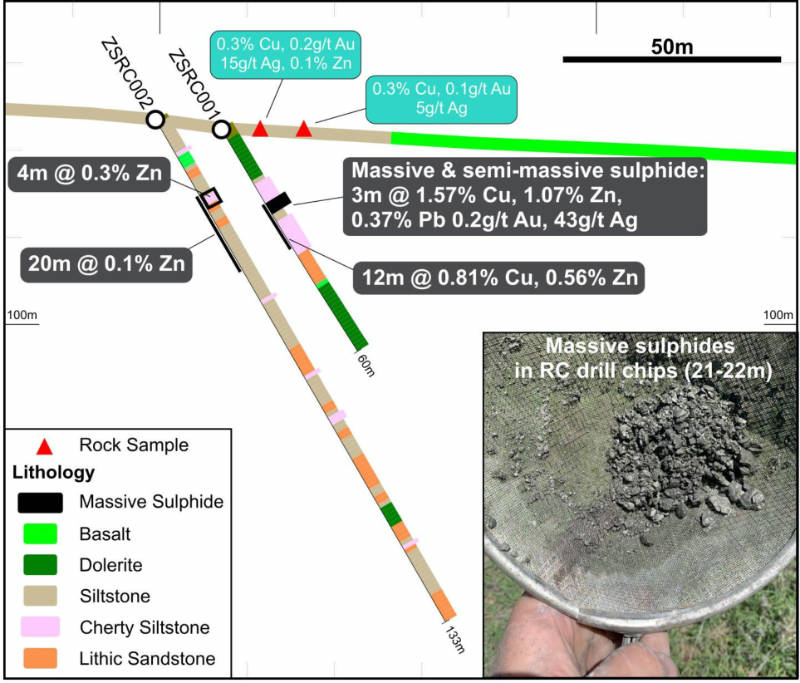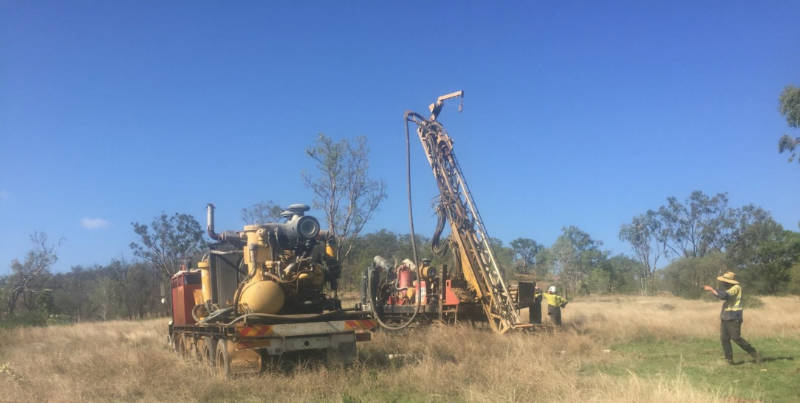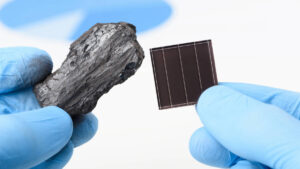Zenith hits best base metals interval to date at Snook

Pic: Tyler Stableford / Stone via Getty Images
Special Report: Zenith has made its most significant massive sulphide intersection and best base metals interval to date at the new Snook prospect in Queensland.
The first hole in the shallow seven-hole program, which tested just 200m of strike, returned a 2m interval of massive sulphides grading 1.95 per cent copper, 1.34 per cent zinc, 0.48 per cent lead, 55 grams per tonne (g/t) silver and 0.3g/t gold from a depth of 20m.
This is located at the top of a broader 12m interval at 0.81 per cent copper, 0.56 per cent zinc, 0.19 per cent lead, 22g/t silver and 0.1g/t gold.
Zenith Minerals (ASX:ZNC) adds that a drilling program at the greenfields prospect within the advanced Develin Creek volcanic hosted massive sulphide (VMS) project in Queensland also intersected wide zones of strongly anomalous copper-zinc, gold and silver.
Follow-up geophysical surveying and drilling is planned for early 2021 to better understand both the host rock and mineralisation orientations.

Chief executive officer Mick Clifford says the company is delighted to intersect massive sulphides with similar levels of mineralisation to those within its existing resource inventory about 30km to the north.
“VMS deposits commonly have very high in-ground values and generally occur in clusters. The discovery of massive sulphides at the Snook prospect validates the cluster theory and highlights the potential of the company’s land package at Develin Creek,” he added.
“This massive sulphide intersection is an exciting development for the project area and elevates the Develin Creek copper-zinc project for high-priority follow-up.”

Devlin Creek
Devlin Creek covers about 50km of highly prospective host rock about 80km northwest of Rockhampton and has a current resource of 2.57Mt grading 1.76 per cent copper, 2.01 per cent zinc, 0.24g/t gold and 9.6g/t silver (2.62 per cent copper equivalent) within the Sulphide City, Scorpion and Window deposits.
Resource grades may potentially be upgraded as a reverse circulation hole twinning a percussion hole drilled in 1993 returned significantly higher copper, zinc, gold and silver grades.
Initial metallurgical test work has also returned positive first stage “rougher” recoveries of about 90 per cent.
Snook was identified earlier this year after geological reconnaissance mapping and soil sampling outlined a 25m wide zone of gossanous sedimentary rocks over 150m of strike.
While the result from the first hole is encouraging, the second hole – originally drilled to test for a sub-vertical zone of sulphides – intersected a similar broad zone of zinc mineralisation, which suggests that a near surface, flat lying zone of mineralisation is present at Snook.
Further support for this theory comes from the initial interpretation that the sedimentary host sequence is most likely flat lying, opening up a large-scale target to the north and east where mineralisation remains open and untested.
Additionally, Snook’s massive sulphide geochemistry signature confirms that a typical VMS system may be present.
This article was developed in collaboration with Zenith Minerals, a Stockhead advertiser at the time of publishing.
This article does not constitute financial product advice. You should consider obtaining independent advice before making any financial decisions.
Related Topics

UNLOCK INSIGHTS
Discover the untold stories of emerging ASX stocks.
Daily news and expert analysis, it's free to subscribe.
By proceeding, you confirm you understand that we handle personal information in accordance with our Privacy Policy.








